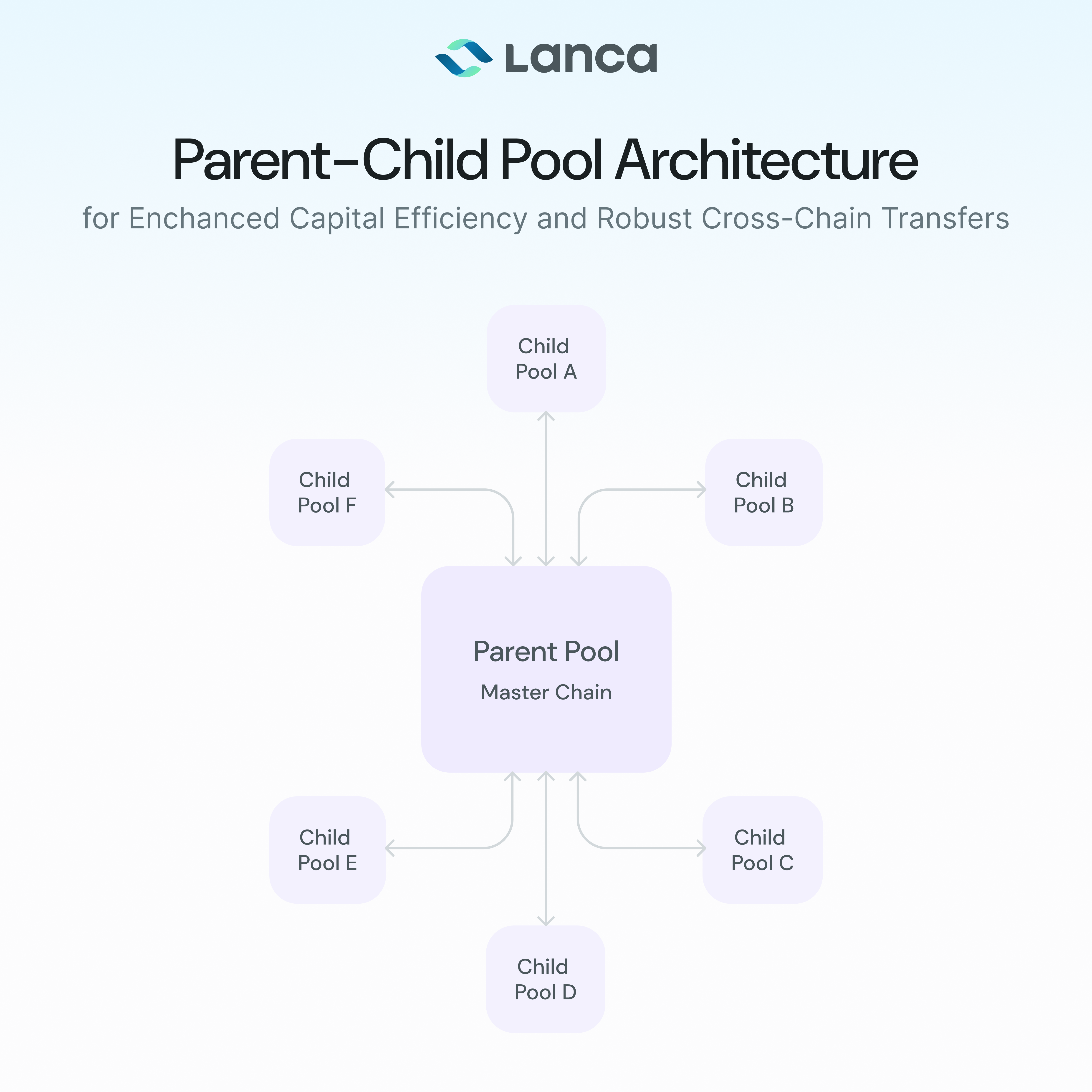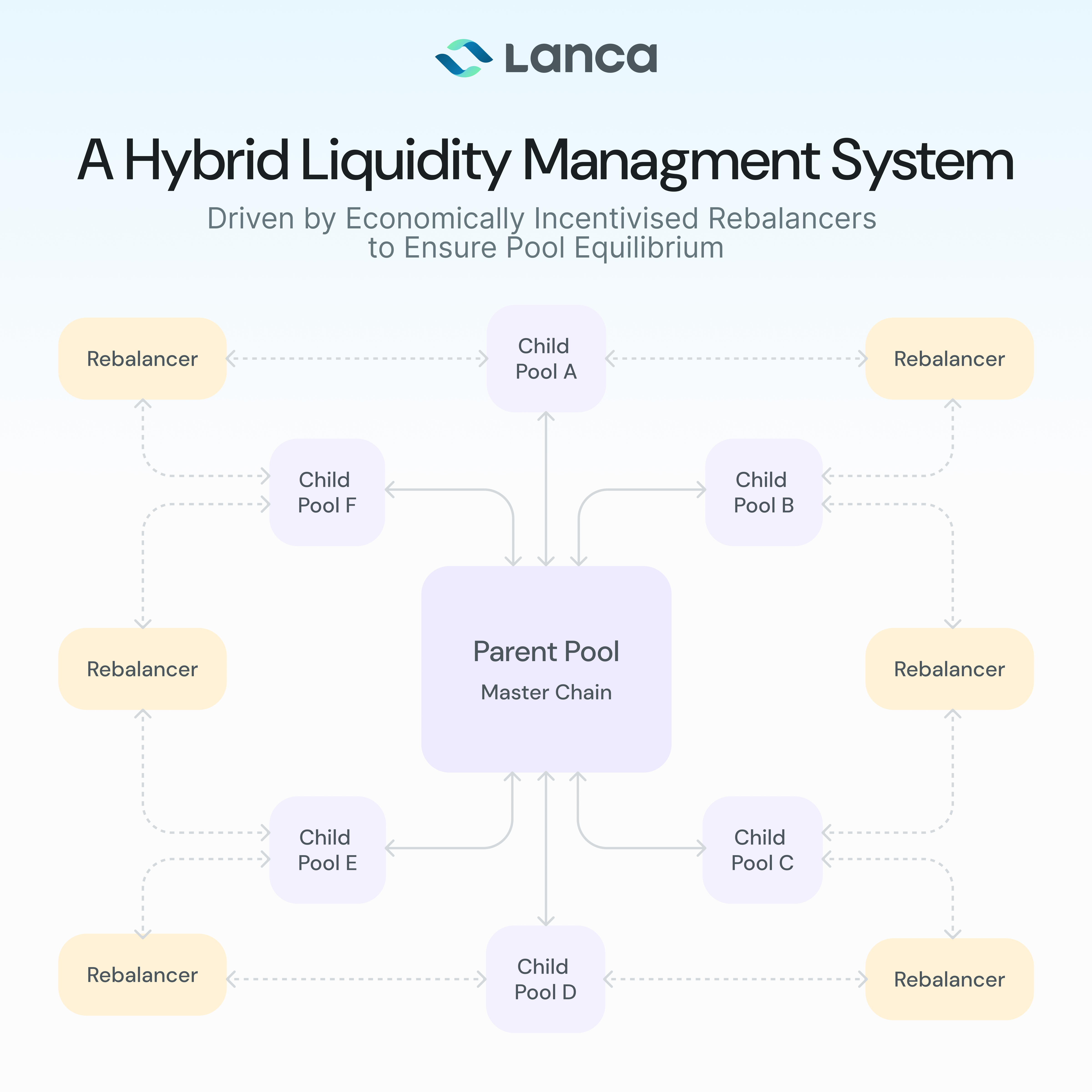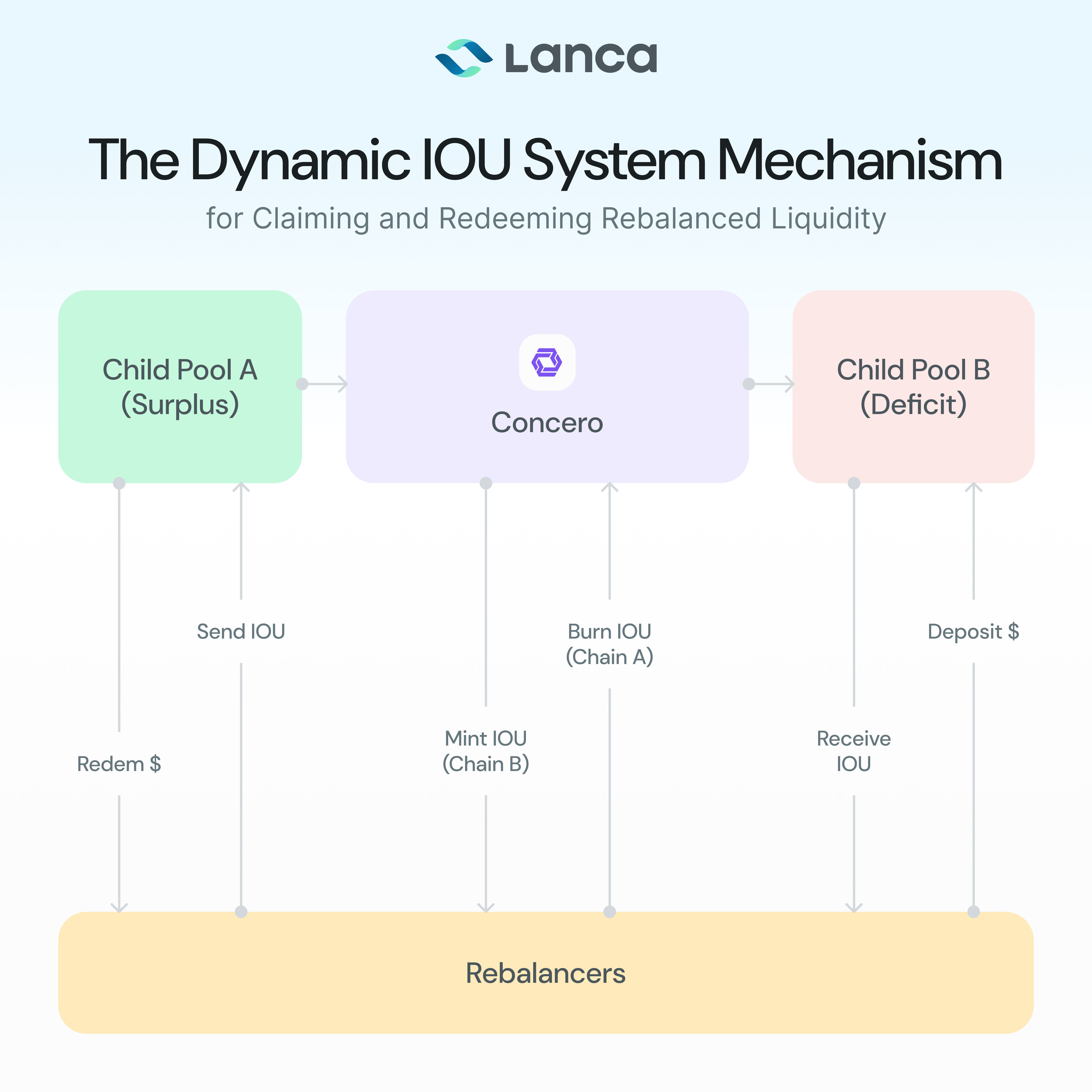LBF Core Concepts
At its core, LBF uses a Parent-Child Pool model.
- Parent Pool: This is the central liquidity hub located on a master blockchain. It holds the system's total liquidity, like a central bank.
- Child Pools: These are smaller liquidity pools on all other connected chains. They act like local branches, holding sufficient funds to process user transactions instantly.

This structure is kept in balance by two key mechanisms:
1. Rebalancers and the IOU System
To handle daily fluctuations, LBF relies on independent third-parties called Rebalancers.

When a Child Pool runs low on funds (a deficit state) due to high demand, a Rebalancer can step in and deposit their own capital to top it up. In return, the system issues them an IOU (I-owe-you) token, which is a receipt for their deposit.
The Rebalancer can then take this IOU to any Child Pool with excess funds (a surplus state) and redeem it to get their capital back, plus a fee for their service. This process acts as a rapid, market-driven way to shift liquidity exactly where it is needed, ensuring transactions never fail due to a lack of funds.

2. Dynamic Rebalancing Algorithm
For long-term efficiency, the Parent Pool uses a Dynamic Rebalancing Algorithm. It constantly analyses the transaction volume and health of every Child Pool.
Based on this data, the algorithm intelligently adjusts the target amount of liquidity each Child Pool should hold. It automatically moves capital from less active pools to busier ones, preventing funds from being wasted and maximising the system's overall capital efficiency.
By combining the strategic oversight of the Parent Pool with the quick actions of Rebalancers, LBF creates a highly adaptive and secure network for seamless cross-chain value transfer.